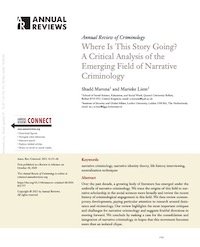By The Children’s Commissioner for England
This report draws together research from focus groups with teenagers aged 13-19 and a survey of 1,000 young people aged 16-21. Of the 64% who said that they had ever seen online pornography: • We find that pornography exposure is widespread and normalized – to the extent children cannot ‘opt-out’. The average age at which children first see pornography is 13. By age nine, 10% had seen pornography, 27% had seen it by age 11, and half of children who had seen pornography had seen it by age 13. • We also find that young people are frequently exposed to violent pornography, depicting coercive, degrading or pain-inducing sex acts; 79% had encountered violent pornography before the age of 18. Young people expressed concern about the implications of violent pornography on their understanding of the difference between sexual pleasure and harm. Indeed, this report finds that frequent users of pornography are more likely to engage in physically aggressive sex acts. • Pornography is not confined to dedicated adult sites. We found that Twitter was the online platform where young people were most likely to have seen pornography. Fellow mainstream social networking platforms Instagram and Snapchat rank closely after dedicated pornography sites. At the time of publication, the UK’s landmark Online Safety Bill is making its way through Parliament. It holds the promise of, finally, regulating pornography sites and ensuring that they implement robust age verification to protect children. Now is a vital moment to ensure that we understand the impact of pornography on children’s lives, and to legislate for a commensurate response. This report is published as the Online Safety Bill passes through Parliament. The legislation, as currently drafted, imposes important age verification requirements (technical measures to establish someone’s age) on platforms which host pornography to prevent under-18s from accessing adult content online. The research contained within this report syntheses data from a nationally representative survey of over 1,000 young people aged 16-21 in England and two focus groups with teenagers aged 13-19. All research was conducted between November 2022 and January 2023 by the Children’s Commissioner’s Office (CCo) with an aim of understanding the prevalence of pornography exposure (both intentional and unintentional) among young people and its impacts on children’s safety and wellbeing. Differences between groups are only reported where they were statistically significant. The Commissioner intends for this report to aid Parliamentarians as they make crucial decisions about the protection of children from harmful content, including pornography, through the Online Safety Bill. The Commissioner also hopes that findings from this research will support the regulator, Ofcom, in their future enforcement regime, as well as parents, teachers and other key professionals, to understand and protect children from pornography’s impacts. The main research findings are set out below. Unless otherwise indicated, figures refer to young people who have ever viewed pornography. • Pornography consumption is widespread among children. The average age at which children first saw pornography was just 13 years old. • Many children are first exposed to pornography at a very young age. A significant minority of children access pornography at very young ages: 10% had seen it by age nine, 27% had seen it by age 11 and 50% of children had seen it by age 13. • Children often stumble accidentally across pornography online; 38% of 16-21-year-olds said that they had accidentally come across it online. In focus group discussions, young people told the CCo that accidentally viewing pornography for the first time made them feel ‘confused’, ‘insecure’, ‘troubled’ and ‘curious’. Chillingly, some young people spoke about the role of sexualised cartoons, depicting popular children’s characters and which appear in pop-up ads, in actively grooming young children towards adult pornography. • A significant minority of young people are sent explicit images involving a person known to them in real-life. Girls are disproportionately the target of ‘self-generated’ pornography, 51% of girls aged 16-21 had been sent or shown explicit content involving someone they know in real-life, compared to 33% of boys. • Twitter is the platform where the highest percentage of children had seen pornography; 41% of young people reported having seen it on Twitter. Dedicated pornography sites came next (37%), followed by Instagram (33%), Snapchat (32%) and search engines (30%). • Many young people seek out pornography online. Half (50%) of survey respondents, 58% of boys and 42% of girls, aged 16-21 said that they sought out online pornography themselves. • A significant proportion of males are frequent users of pornography. A fifth (21%) of males aged 16-21 viewed content at least once a day in the 2 weeks prior to the survey, compared to just 7% of girls. This is suggestive of a dependency which carries its own risk of interrelated harms. • Boys and those who first viewed online pornography at age 11 or younger were significantly more likely to become frequent users of pornography, consuming it twice or more per week. Focus group participants told us that pornography was sought for several reasons; sexual gratification, curiosity and to ‘learn’ about sex, and pressure to ‘fit in’ with peers. • Children are frequently exposed to violent pornography. The majority, 79%, of 18-21-yearolds had seen content involving sexual violence before turning 18. Early exposure to pornography and frequent consumption significantly increased the likelihood of viewing violent content. Young people are significantly more likely to see violence perpetrated against a woman (65%) than against a man (29%) in pornography. • A significant proportion of young people seek out violent pornography; 36% of young adults had sought out content involving at least one act of sexual violence. Again, a young age of first exposure and frequent consumption of pornography were predictors in the likelihood of actively seeking out violent content for sexual gratification.
London: Children's Commissioner for England, 2023. 48p.





















